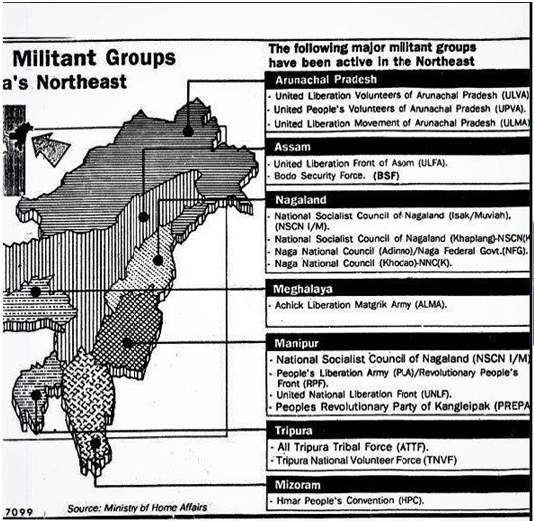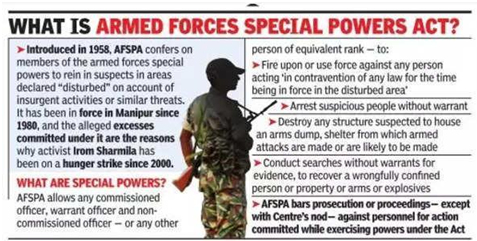80% decline in insurgency-related violence in northeast: Union Minister Anurag Thakur
Why in the News?
- Recently, the Information and Broadcasting Minister said that the insurgency-related violence in the northeast has declined by 80%.
About
- Eight states make up today’s Northeast India (NEI): Sikkim, the “seven sister states” of Assam, Arunachal Pradesh (ALP), Nagaland, Manipur, Mizoram, Tripura, and Meghalaya, as well as Tripura.
- The Tibet Autonomous Region (TAR), Nepal, Bhutan, Myanmar, and Bangladesh form the borders of the NEI.
- Since the 1950s, there has been insurgency in NEI.
Reasons for Insurgency in NEI
- Multi-Ethnic Region: The Northeast of India is India’s most ethnically diversified region. There are about 40 million people living there, including 213 of the 635 tribes that the Anthropological Survey of India has identified. Inter-tribal rivalries, which feed tribal/ethnic insurgencies, make the situation even worse.
- Underdeveloped Region: Infrastructure development in NEI has often been delayed due to the challenging terrain arrangement of jungles and mountains. Due to this, the rift between the NEI and mainstream India has grown wider and people’s dissatisfaction with the GoI has grown as a result.
- Lack of Economic Development: The GoI’s economic policies have exacerbated the populace’s discontent and sense of insecurity. Due to this, young people are easily seduced by rebel organisations offering easy money.
- Sense of Isolation, Deprivation, and Exploitation: Being far from New Delhi and having little representation in the Lok Sabha has further diminished the voice of the people’s interests being heard in the halls of power, increasing disenchantment with the dialogue process and making the call of the gun more alluring.
- Demographic Changes: Assam’s population has seen a significant change as a result of the migration of refugees from what is now Bangladesh.
- External Help: Former East Pakistan provided training and weaponry to the Naga Army in order to support the insurgencies in the NEI in the late 1950s and early 1960s. Later, China offered moral support as well as weapons.
Way Forward/ Suggestions
- Strengthening of laws and agencies: The government had worked on the legal front by strengthening the Unlawful Activities Prevention Act (UAPA) and taken action at the enforcement level by providing the National Investigation Agency (NIA) with a genuinely federal structure through amendments to the pertinent law.
- 94% of instances involving terror financing have resulted in convictions thanks to investigation authorities.
- Landmark agreements: Through a number of peace agreements, including the Bodo Accord, Bru-Reang Agreement, NLFT-Tripura Agreement, Karbi Anglong Agreement, and the Assam-Meghalaya Inter State Boundary Agreement, the government has worked to establish a climate of long-lasting peace throughout the northeastern region.
- In the northeast, the Armed Forces Special Powers Act (AFSPA) has been repealed in considerable portions, including all of Tripura, Meghalaya, and 60% of Assam.
- Continued Civil Society Efforts: Despite the advancement of the peace negotiations, the civil society must continue its efforts to build bridges with the rebel groups. This gives the leaders of the insurgency a credible route out and creates a situation where everyone wins.
- sanctity of the international border between India and Myanmar: In the states of Arunachal Pradesh, Nagaland, Manipur, and Mizoram, India and Myanmar share an approximately 1400 km long international border. 14 In order to prevent rebels from crossing the border at will, its sanctity must be strengthened.





